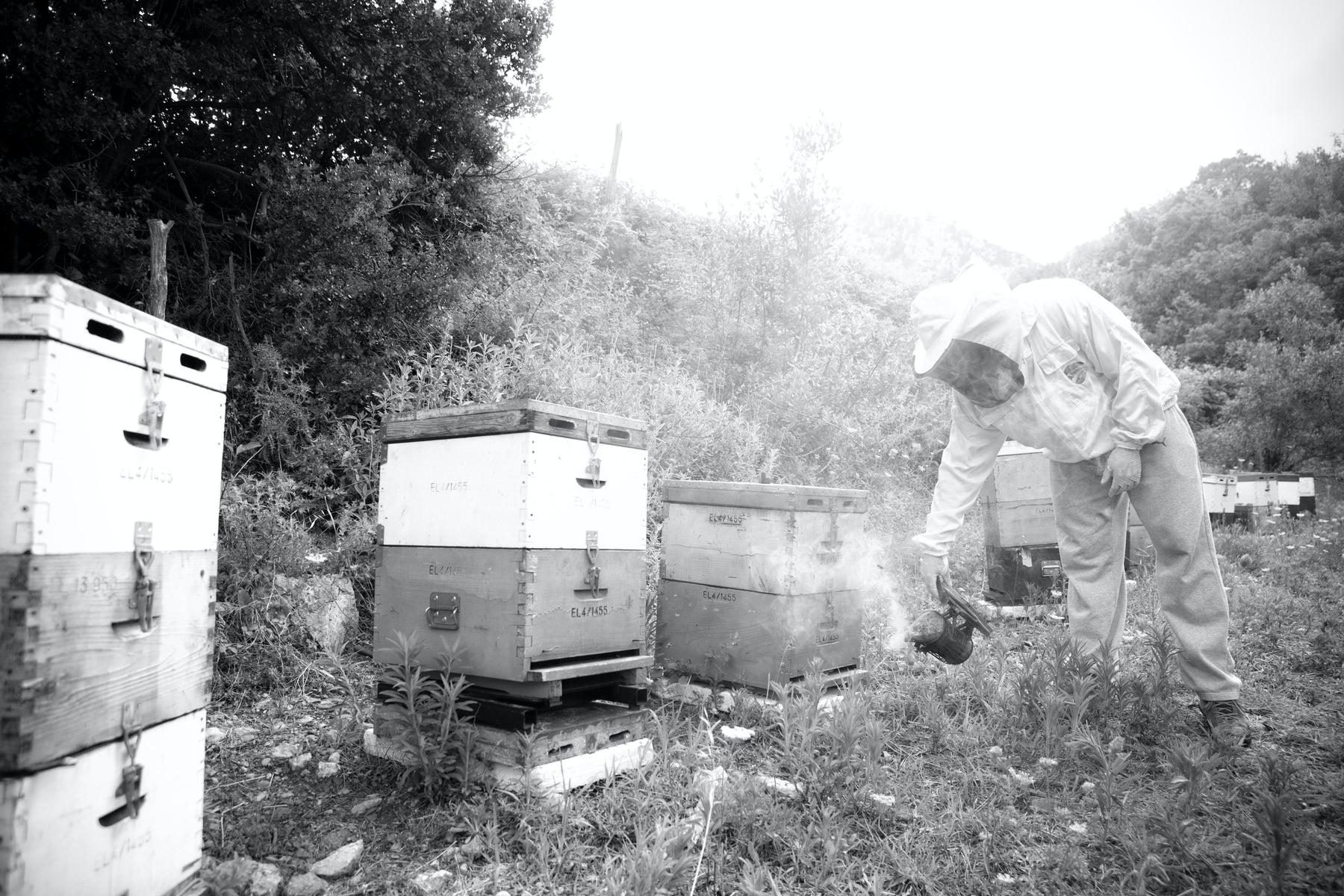
Fall Beekeeping-Part 3 | Supplemental Feeding Bees in Winter and Fall
Today, we continue our fall beekeeping series. In our last blog post, we discussed how to determine whether your colony has enough honey stores to make it through the winter. Today, we’re going to talk about what you can do if your colony is short on stored honey supplies. What you do to remedy this issue can mean the difference between life or death for your colony.
Hopefully, when doing your fall hive inspections, you’ve determined that your colony has enough honey to make it through the winter. Not sure how much is enough for your area? Talk to experienced local beekeepers or a local agricultural agency to find out how much is enough. If your colony is short on supplies or if you are experiencing a nectar dearth, you may want to immediately implement a fall and/or winter feeding program.
Supplemental Feeding During the Fall and Winter
Nectar dearths often occur in the fall; therefore, feeding 2:1 (2 parts sugar to 1 part water) sugar water inside the hive is often beneficial. Top feeders and frame feeders work well for this purpose, making the food easily accessible to the bees.
Feeding colonies sugar water may be helpful; however, once temperatures drop into the 50s, liquid feed is not as beneficial. Do not feed sugar water in late fall or winter. Excess moisture in the hive during the winter can cause problems, and the bees have to expend a lot of energy to convert the sugar water into nectar.
Although you might be tempted to do so and think it safe, do not feed your bees honey from an unknown source. This may cause an infection in your colony. Instead, the following can be used:
- Sugar syrup/water
- Granulated sugar
- Fondant
- Pollen patties
Of these choices, pollen patties, which are high in carbohydrates and protein, are one of the best choices for winter feeding. They can be placed inside a top feeder or a frame feeder, or a pattie can be laid across the top of the bars or queen excluder where the bees can easily access it. Fondant can also be laid across the top of the bars; however, it can become sticky, at which point the bees can become trapped in it.
Feeding granulated sugar can be tricky and messy, although, the use of a top feeder or a frame feeder can make it much easier.
Whichever method you choose, it’s best to have your fall hive feeding plan in place for those colonies that need it. If you want your colony to survive the winter, it’s time to take the necessary steps to ensure that your bees have the food stores they’ll need to make it through the cold months ahead.
When it gets extremely cold, bees can starve even when food is available in a super on top of your brood box. This is because the bees cluster together to keep the queen and brood warm and will not venture up to the super to retrieve food. For this reason, food sources that are convenient and close – such as with the use of a top feeder or a frame feeder – may work best of all. Then the bees don’t have to go far to obtain the food.
General Questions About Suppemental Feeding
1. Why is supplemental feeding necessary for bees in the fall and winter?
Supplemental feeding is necessary when colonies are short on stored honey or during a nectar dearth in the fall. It helps ensure bees have enough food to survive the winter, especially when natural food sources are scarce or unavailable.
2. What type of sugar syrup should be used for fall feeding, and why?
For fall feeding, a 2:1 sugar syrup (2 parts sugar to 1 part water) is recommended. This higher sugar concentration helps bees store the syrup as honey more efficiently, providing them with necessary energy reserves for winter.
3. Why should liquid feed not be used in late fall or winter?
Liquid feed should be avoided in late fall or winter because it can add excess moisture to the hive, which can cause problems for the bees. Additionally, bees expend a lot of energy converting sugar water into honey, and they may not be able to do this efficiently in colder temperatures.
4. What are the best options for winter feeding when temperatures drop?
The best options for winter feeding include granulated sugar, fondant, and pollen patties. Pollen patties are especially beneficial as they provide both carbohydrates and protein, which are essential for bee health. These options are easier for bees to access and less likely to add moisture to the hive.
5. How should feeders be placed to ensure bees can access food during extreme cold?
Feeders should be placed close to the bee cluster to ensure easy access during extreme cold. Top feeders or frame feeders positioned directly above or next to the brood area work best, as bees cluster together to keep warm and may not venture far for food. This placement helps prevent starvation even when food is available but not easily reachable.
Remember, DO NOT open the hive unless absolutely necessary when temperatures fall into the lower 50s and below.
Proper fall feeding is critical for the survival of some hives, especially those that are short on food stores. Before harsh weather arrives or the first killing frost heads your way, it’s best to do everything you can and have a plan in place to prepare your colonies for the long cold winter ahead.



Leave a comment